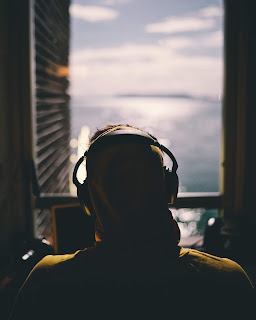The Battle In Your Ears: Playing with In-Ear Monitors
Check 1
Check 2
Check 1 2 3.
Testing. Is this thing on?
Oh the sounds of the beloved sound check! When you're playing music, you have to be able to hear the music, whether that's just yourself and/or your bandmates. That's where monitors come in to play. They either take the form of speakers on the stage pointed towards the musicians or these cool headphone-looking things we call In-Ear Monitors (IEM's for short). They're great because not only do they directly give you what you're trying to listen for, but they also isolate unwanted noise, enable playing with click tracks, enable clearly hearing things in stereo, and typically have a higher quality of sound. But probably the most important part of using IEM's is looking cool while using them.
Whoa now! Hey there! Take it easy! I'm not trying to throw shade on in-ears. I love them! BUT... sometimes my in-ears are the reason why I play the drums too loudly. I'd like to discuss a few things you can do to ensure that your IEM's are not to blame for everyone's hearing loss. So listen up! (intentional pun)
- Understand how your drums sound in the room. I think it's worth mentioning that just because something might sound awesome in your in-ears, it doesn't mean that it will sound just as awesome in the room. That's why it's important to take a step back and see the bigger picture. That happens when you understand how your drums sound in the room without your IEM's.
These questions will help you understand the room: How loud is too loud? Does this sound clear? Does this have good tone? Does this ring for too long? It's amazing how the exact same drum set will give you different answers to those questions in a different room.
There are a few ways to go about this. Personally, I like to hit my drums without my in-ears. Ideally, this happens before we get started rehearsing. Also, you can have someone else play your drums while you go out to where the crowd is going to be and listen.
Another thing you can do is to play a section of a song with one ear in and one ear out. I try to do this as little as possible as playing with one ear in and one ear out is really bad for your hearing. I do it just long enough to understand my limits. I'll play as loud as I should be, take note of how hard I'm playing - what that feels like, and try not to go above that.
Sometimes you'll see microphones on the stage pointed towards the crowd. Those crowd mic's or room mic's help show you how you sound from that perspective. I don't like to use them because they destroy any clarity I have in my monitor mix and it doesn't sound as natural as taking my ears out. But hey, you do you. - Make sure you can hear yourself. As obvious as that should be, I have found that when I can't hear myself, I'll play louder...so that I can hear myself. Instead of adjusting my playing, it would be actually sound better if I adjusted my monitor.
If the drum set isn't mic'd and we're using IEM's, (which has happened to me before) then it's pretty safe to say I won't be able to hear myself, and I'll end up playing too loudly - it's a recipe for disaster. The solution in this particular case is to either mic the drums for the monitor's sake or to lose the IEM's.
One trick I've learned is to turn myself up too loud in my monitor. Because I'm so loud, I'll play softer so that I can actually hear what I need to hear. That doesn't always work, especially not for everyone, but it's something that I can do if I don't trust myself to remember to play softer.
IEM's are great! But they come with a battle: the battle of what you hear vs reality. Fight well by understanding how you sound without your IEM's and by making sure you can hear yourself.






Comments
Post a Comment